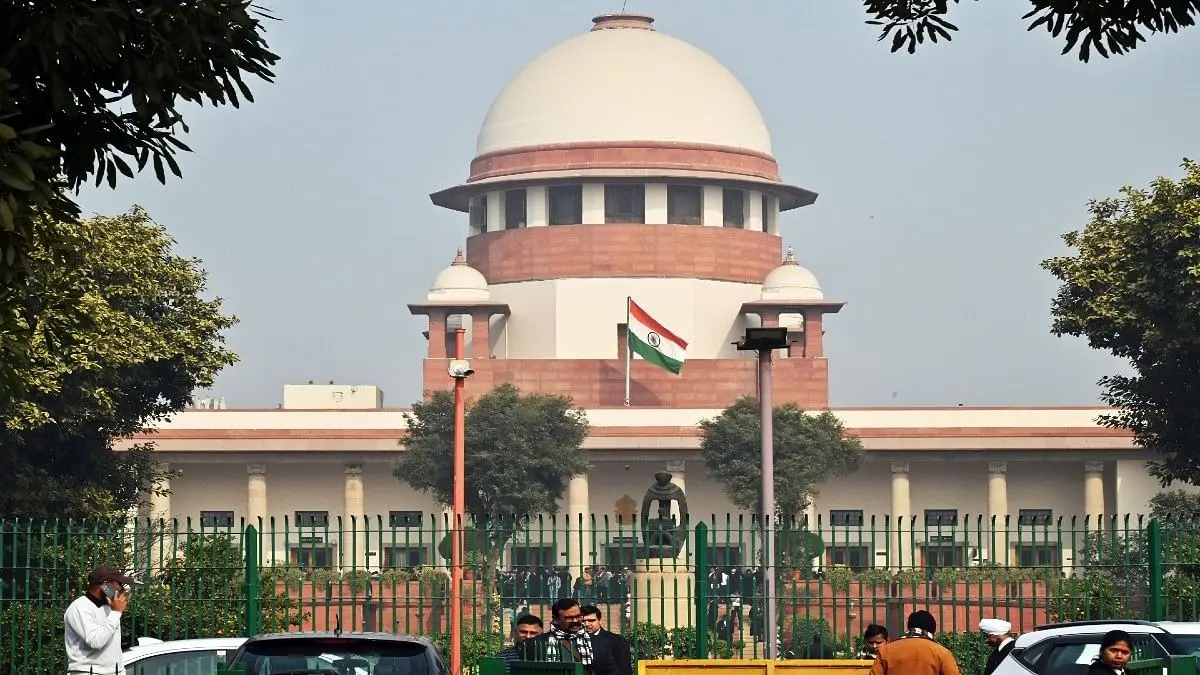Updated 16 April 2024 at 16:56 IST
‘We Know What Happened…’: Supreme Court Highlights Drawbacks of Ballot Voting Method
"We are in our 60s. We know what happened when there were ballot papers, you may have, but we have not forgotten," Justice Sanjiv Khanna told Prashant Bhushan.
- India News
- 3 min read

New Delhi: The Supreme Court on Tuesday delved into the complexities surrounding the Electronic Voting Machines (EVMs) and the Voter Verified Paper Audit Trail (VVPAT) system, sparking a discourse on the efficacy of the secret ballot voting method.
During the proceedings, Justice Sanjiv Khanna voiced concerns over past challenges with ballot papers, indicating a reluctance to revert to paper ballots despite arguments favoring them by Prashant Bhushan, counsel for the Association for Democratic Reforms. Bhushan highlighted the trend of European countries returning to paper ballots, prompting Justice Dipankar Datta to juxtapose India's significantly larger voter population.
"We are in our 60s. We all know what happened when there were ballot papers, you may have, but we have not forgotten," Justice Sanjiv Khanna told Prashant Bhushan.
Bhushan in the argument said, "We can go back to paper ballots. Another option is to give VVPAT slip to the voters in hand. Otherwise, the slips falls into the machine and the slip can be then given to the voter and it can be put into the ballot box. Then the VVPAT design was changed, it had to be transparent glass, but it was changed to dark opaque mirror glass where it is only visible when the light is on for 7 seconds.”
Advertisement
We all know what happened during ballot papers: Justice Khanna
On Bhushan citing Germany's example, Justice Dipankar Datta questioned him about Germany's population. Bhushan replied that it around 6 crore, while India as 50-60 crore voters.
"Ninety-seven crore is the total number of registered voters. We all know what happened when there were ballot papers," Justice Khanna said.
Advertisement
When Senior Advocate Sanjay Hegde, counsel for one of the petitioners, said votes cast on EVMs should be tallied with VVPAT slips, Justice Khanna replied, "Yes, 60 crore VVPAT slips should be counted. Right?"
The judge said human interventions "lead to problems and human weakness can be there, which includes biases as well". "Machine normally without human intervention will give you accurate results. Yes, the problem arises when there is human intervention or makes unauthorised changes when they are around the software or machine, if you have any suggestion to avert this, then you can give us that," he said.
Bhushan then read out a research paper on the possibility of EVMs being tampered. "They are only counting 5 vvpat machines per assembly when there are 200 such machines, this is 5 per cent only and there can be no justification in this. The seven-second light can also lead to manipulation. The voter can be allowed to take the VVPAT slip and put it into the ballot box," he said.
Senior Advocate Gopal Sankaranarayan, appearing for one of the petitioners, said, "I adopt everything that Mr Bhushan says. We are not saying that there is any malice. Only issue is that of the confidence of the voter in the vote he has cast."
The court then asked the Election Commission of India about the process of voting, the storage of EVMs and counting of votes. Justice Khanna noted that there is no provision for strict punishment for tampering with EVMs. "This is serious. There should be fear of punishment," he said.
Published By : Isha Bhandari
Published On: 16 April 2024 at 16:56 IST
